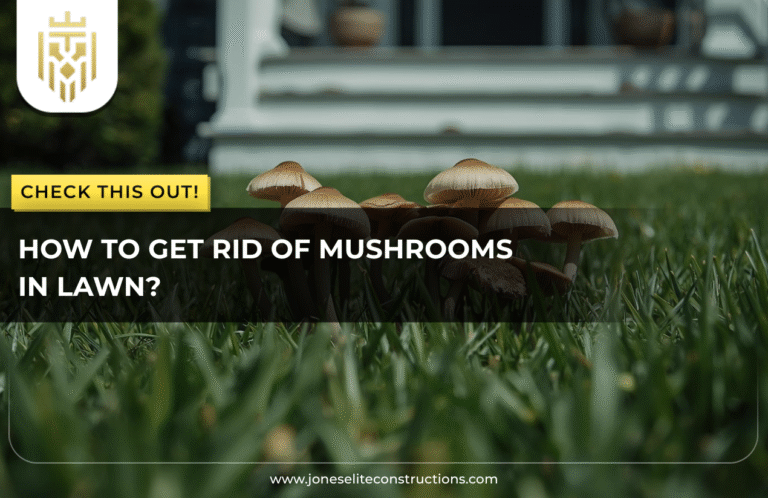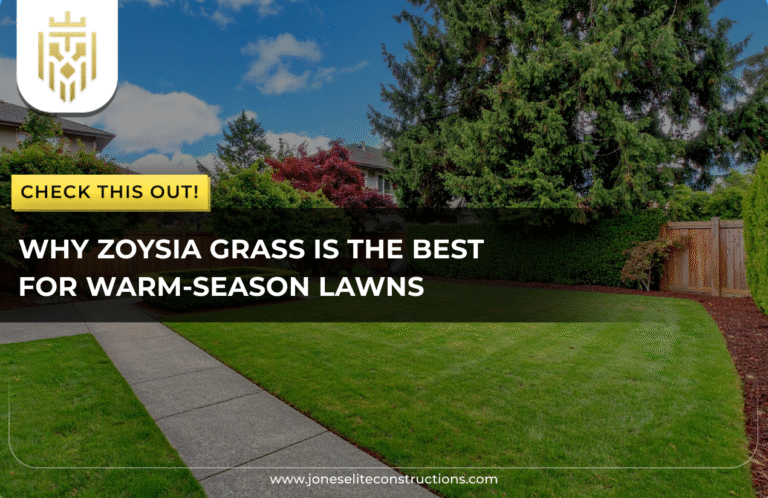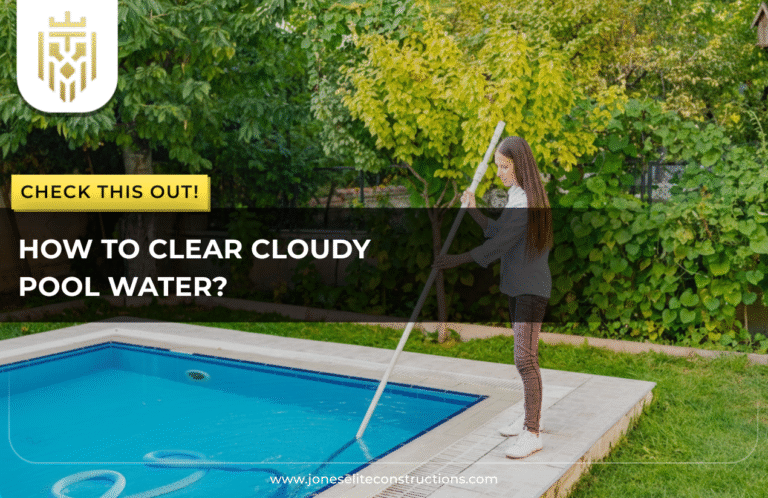What is Landscape Maintenance?
Landscape maintenance is the ongoing care of outdoor areas, including lawns, plants, and hardscapes. This important practice keeps a property healthy, vibrant, and well-kept throughout the year. Understanding what landscape maintenance is helps homeowners and businesses create inviting outdoor spaces that balance beauty and function.
Benefits of Regular Landscape Maintenance

Regular landscape maintenance adds visual appeal, environmental benefits, and long-term savings. It promotes healthier plant growth, keeps pests at bay, and extends the life of structures. With regular care, homeowners and businesses enjoy consistently beautiful and functional outdoor settings in every season.
Improves Curb Appeal
Well-maintained landscapes enhance a property’s curb appeal, making homes or businesses look attractive and well-cared for. Whether it’s a vibrant lawn, tidy garden beds, or clean pathways, proper upkeep sends a positive signal and often reflects the quality inside the property.
Enhances Plant Health
Healthy plants come from consistent attention, including proper watering, pruning, and fertilising. These practices prevent overcrowding, disease, and nutrient loss. A good landscape maintenance checklist includes these routines to support strong and flourishing greenery throughout your property.
Increase Property Value
Investing in professional landscape maintenance can increase property values. A well-kept lawn, trimmed trees, and appealing hardscapes provide a premium outdoor experience. This makes your property more attractive to potential buyers or renters, especially in competitive real estate markets.
Controls Pests and Diseases
Regular care helps identify and eliminate pests before they become a bigger problem. Healthy landscapes naturally fend off diseases when plants are pruned, weeds are managed, and soil is cared for. This preventive method saves money and promotes a balanced ecosystem around your home.
Prevents Soil Erosion
Well-planned landscape maintenance preserves soil health. Mulching, proper drainage, and strong roots from healthy lawns and garden beds support soil stability. This is crucial for sloped properties, where runoff could harm foundations or wash away nutrients.
Extends Lifespan of Hardscapes
Routine cleaning, weed removal, and sealing can extend the life of driveways, walkways, and patios. These hardscapes endure daily weather and foot traffic. A good maintenance routine prevents premature wear, cracking, and costly repairs.
Essential Landscape Maintenance Checklist
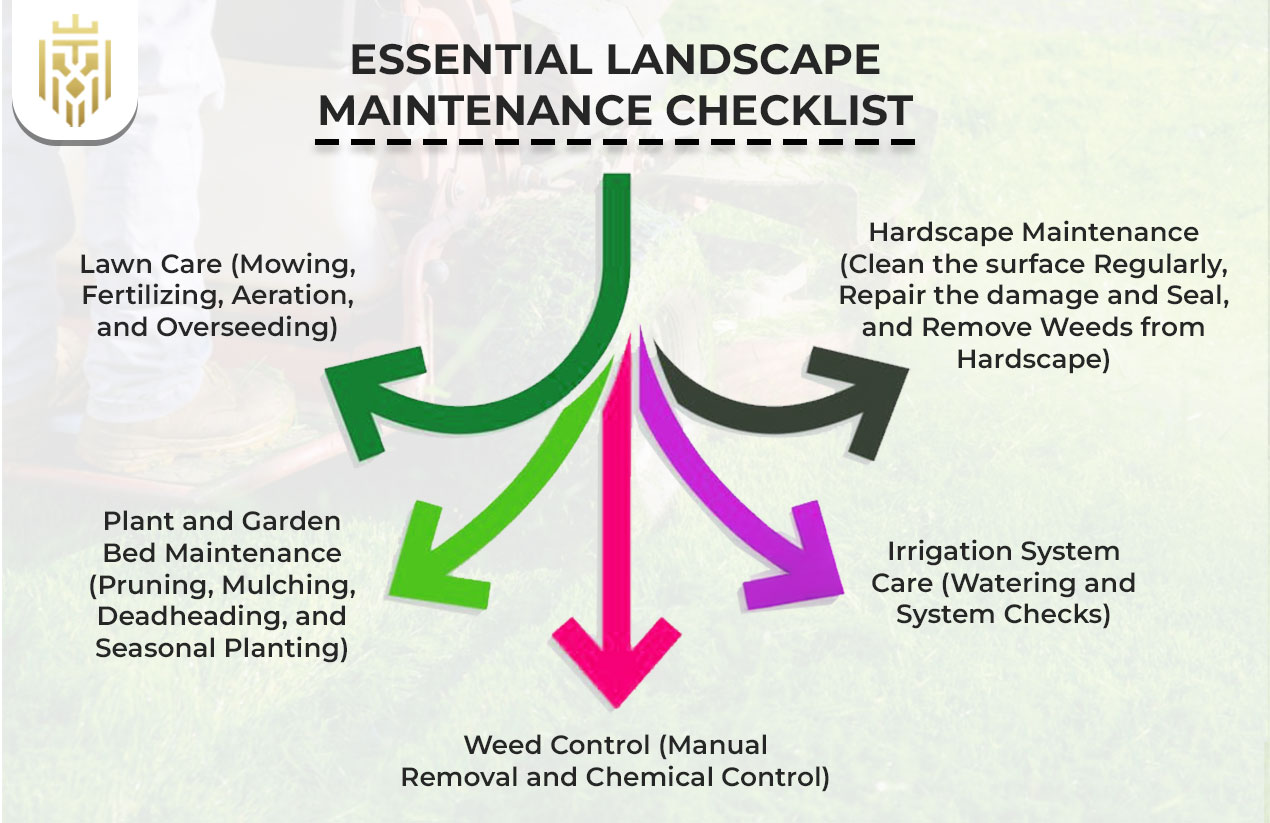
A dependable landscape maintenance checklist makes sure essential tasks are not missed. From lawn care to seasonal planting, watering, and hardscape upkeep, following a structured plan ensures a consistently healthy and attractive outdoor area all year round.
Lawn Care
Effective lawn care includes mowing, fertilising, aerating, and seasonal treatments. These steps promote deep root growth, prevent weed problems, and foster thick, green grass. Seasonal adjustments are suggested based on climate, grass type, and property use.
Mowing
Regular mowing keeps grass at the right height, enhances density, and slows weed growth. It also gives lawns a neat appearance. For the best results, cut only one-third of the grass height at a time and maintain sharp mower blades.
Fertilising
Fertilising replenishes soil nutrients, helping lawns and plants thrive. Choose a balanced fertiliser based on soil tests and apply it at the right times—typically in spring and fall for cool-season grass and summer for warm-season types.
Aeration
Aeration loosens compacted soil, letting air, water, and nutrients reach grass roots. It greatly improves lawn health, especially in high-traffic areas. Most lawns benefit from annual aeration, ideally done in early spring or fall.
Overseeding
Overseeding fills in bare spots and thickens grass coverage. By adding new seed varieties, it boosts disease resistance and turf quality. It is usually done after aeration to ensure seeds penetrate well and develop strong root systems quickly.
Plant and Garden Bed Maintenance
Maintaining garden beds involves pruning, deadheading, mulching, and fertilising. These tasks reduce plant stress and encourage vibrant growth. Regular care ensures flowers bloom fully, perennials last longer, and weeds do not take over decorative beds.
Pruning
Pruning removes dead or diseased branches, promotes new growth, and improves air circulation. It is key for plant health and visual shape. Most trees and shrubs benefit from pruning in late winter or early spring, before new growth starts.
Mulching
Mulch keeps moisture in, controls soil temperature, and stops weed growth. Organic mulch also enriches soil over time. Apply a 2-3 inch layer around plants, avoiding contact with stems or trunks to prevent rot and pest problems.
Deadheading
Deadheading helps flowers bloom continuously by removing spent blooms. This redirects energy toward new growth and improves the plant’s look. Many annuals and perennials benefit from this practice during their bloom season for vibrant, lasting colour.
Seasonal Planting
Seasonal planting brings fresh colours and textures throughout the year. Rotate flowers, vegetables, and shrubs based on local climate and blooming cycles. This keeps your landscape engaging and healthy while adapting to changing weather.
Weed Control
Weeds compete for nutrients, water, and sunlight, weakly affecting desirable plants. Effective control methods include manual removal, applying mulch, and using chemical treatments. Regular checks help prevent large infestations and support overall landscape maintenance efforts.
Manual Removal
Manual removal works well for isolated or early-stage weed growth. Hand-pulling or using tools eliminates roots and prevents regrowth. While labour-intensive, this method is chemical-free, making it good for gardens or areas near edible plants.
Chemical Control
Herbicides provide fast, broad-spectrum weed control. Choose pre-emergent products for prevention or post-emergent for existing weeds. Apply them carefully to avoid harming desired plants, and follow label instructions for timing, mix ratios, and safety.
Irrigation System Care
Irrigation systems require regular checks to work efficiently. Timely watering helps prevent plant stress and supports growth. Maintenance includes testing timers, adjusting sprinkler heads, and ensuring even water coverage across all landscape zones.
Watering
Watering schedules should suit the season and plant types. Deep, less frequent watering is better than daily light sprays. Mornings are ideal to limit evaporation and fungal diseases, and drip systems are great for conserving water.
System Checks
Regular system checks help identify clogged nozzles, leaks, or misaligned sprinklers, which waste water and lead to uneven plant health. Annual inspections by professionals keep irrigation running smoothly and support healthy landscapes.
Hardscape Maintenance
Hardscapes need regular cleaning, weed control, and minor repairs to stay attractive and safe. Including them in your landscape maintenance plan helps preserve property appeal and structural integrity. Neglect can lead to unsightly wear and expensive repairs.
Clean The Surface Regularly
Regularly sweeping or power washing walkways, patios, and driveways removes dirt, algae, and stains. Keeping surfaces clean improves appearance and prevents slippery conditions, especially during wet or humid periods when buildup happens more quickly.
Repair the Damage and Seal
Inspect for cracks or chips and seal hardscape surfaces to shield them from moisture damage. Timely repairs extend lifespans and lower the risk of costly replacements. Use the right sealants for materials like concrete, stone, or brick.
Remove Weeds from Hardscape
Weeds growing in cracks are unsightly and can damage hardscapes over time. Use manual removal tools or targeted herbicides for control. Adding this task to your landscape maintenance checklist helps keep paved areas neat and long-lasting.
Seasonal Landscape Maintenance Checklist
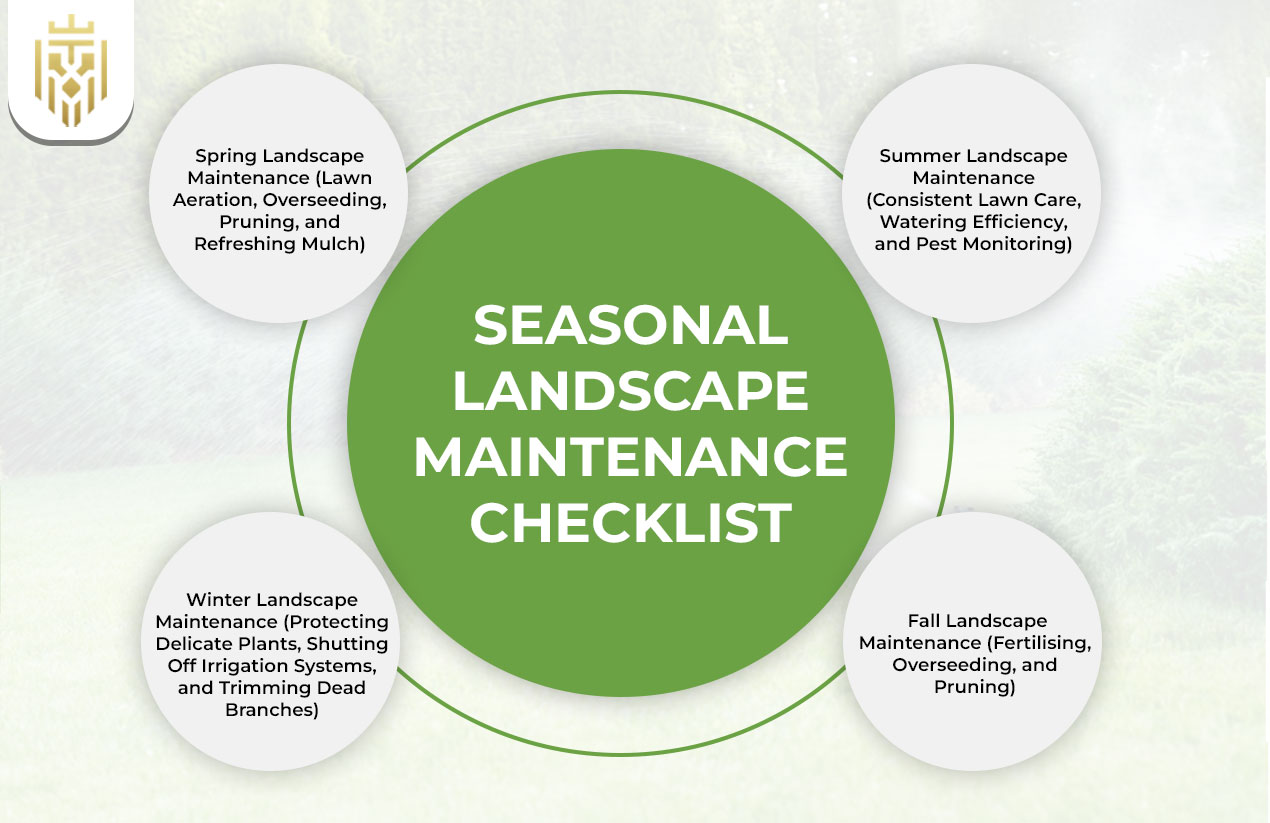
Seasonal changes require different maintenance strategies. A detailed landscape maintenance checklist for spring, summer, fall, and winter helps keep your property looking good and healthy. Tailoring your approach to each season leads to better results and fewer emergency repairs.
Spring Landscape Maintenance
Spring is for lawn aeration, overseeding, pruning, and refreshing mulch. It is also time to check irrigation systems and prepare garden beds. Prioritising these activities in spring sets the stage for growth and vibrancy throughout the year.
Summer Landscape Maintenance
Summer emphasises consistent lawn care, watering efficiency, and pest monitoring. Mow regularly, manage weeds, and check irrigation performance. This is also an apt time to check mulch levels and deadhead flowers to extend blooming.
Fall Landscape Maintenance
Fall is perfect for fertilising, overseeding, and pruning. Clear fallen leaves, inspect hardscapes, and prepare plants for the colder months. These tasks enhance winter resilience and prepare for a healthier, greener landscape next spring.
Winter Landscape Maintenance
Winter maintenance includes protecting delicate plants, shutting off irrigation systems, and trimming dead branches. Clearing snow from walkways and patios helps prevent damage. Even though winter care slows down, it is an important part of any landscape maintenance routine for year-round success.
FAQs
1) What is landscape maintenance?
Landscape maintenance involves regular care of lawns, gardens, and hardscapes to promote healthy growth, cleanliness, and curb appeal. It combines beauty and function for residential or commercial outdoor spaces.
2) What are the essential landscape maintenance tasks?
Essential tasks include lawn care, pruning, mulching, weeding, checking irrigation, cleaning hardscapes, and seasonal planting. Each of these tasks is a vital part of a complete landscape maintenance checklist for outdoor upkeep.
3) When should I hire a professional for landscape maintenance?
Hire a professional when tasks take too much time, need expertise, or require special equipment. This is especially important for complex designs, irrigation systems, or seasonal changes that need skilled workers or specialists.
4) How often should I schedule landscape maintenance?
Schedule landscape maintenance weekly or biweekly for lawns, monthly for hardscapes, and seasonally for plant care. The frequency depends on climate, property size, and the desired appearance of the outdoor space.


